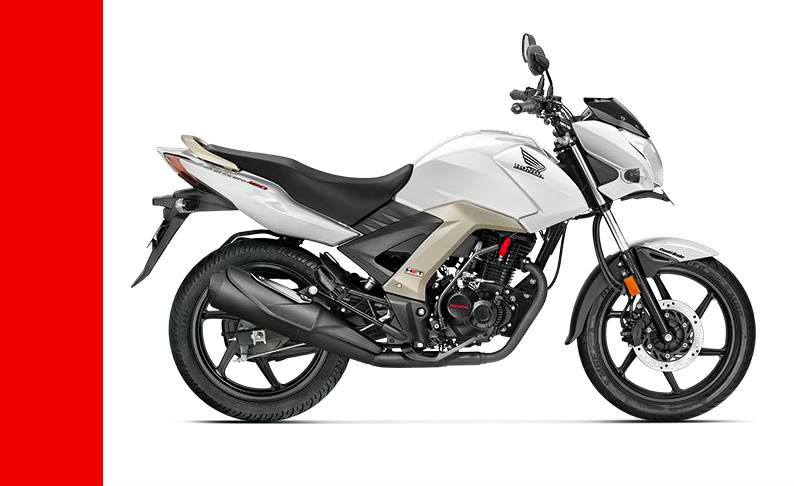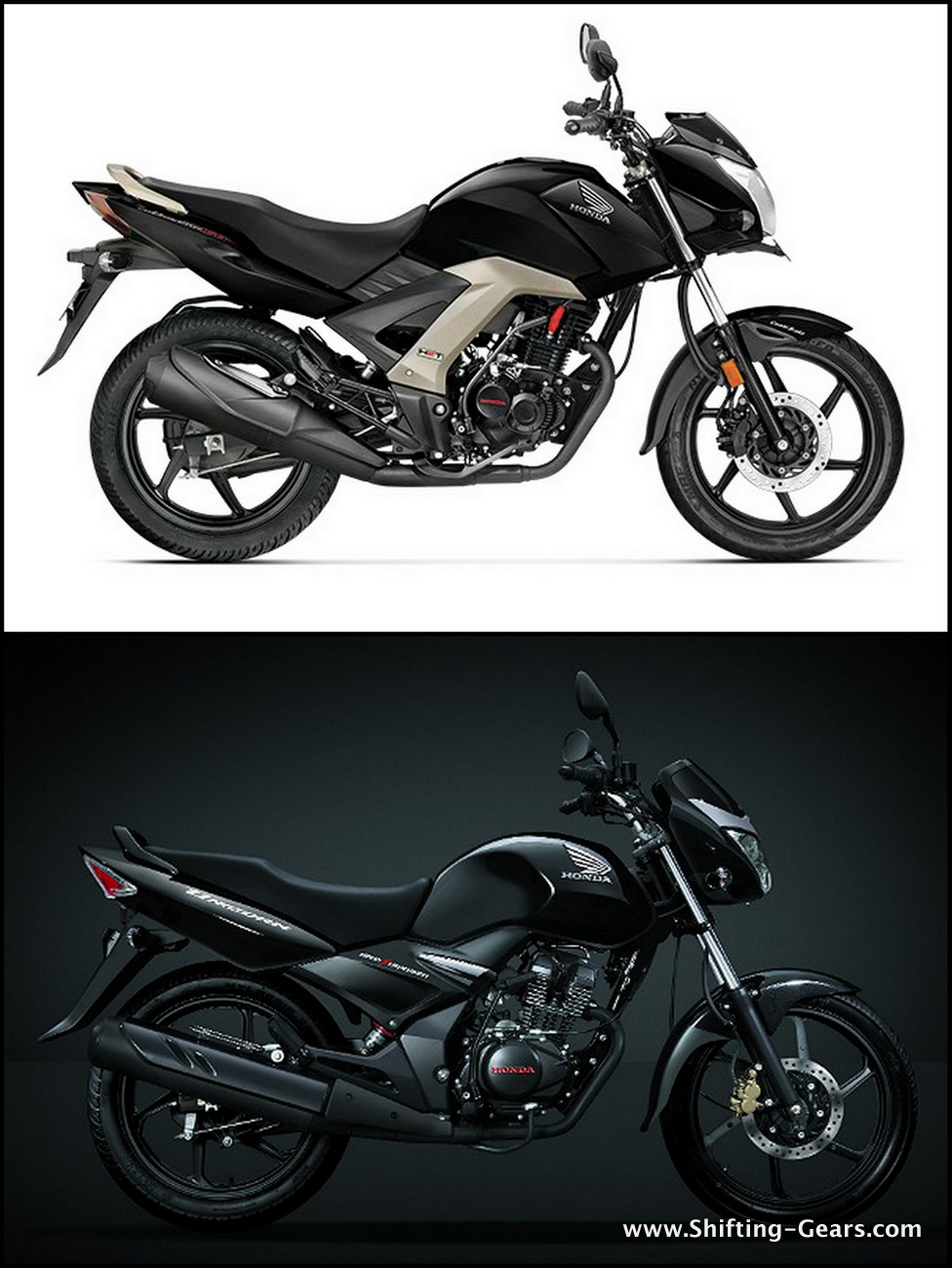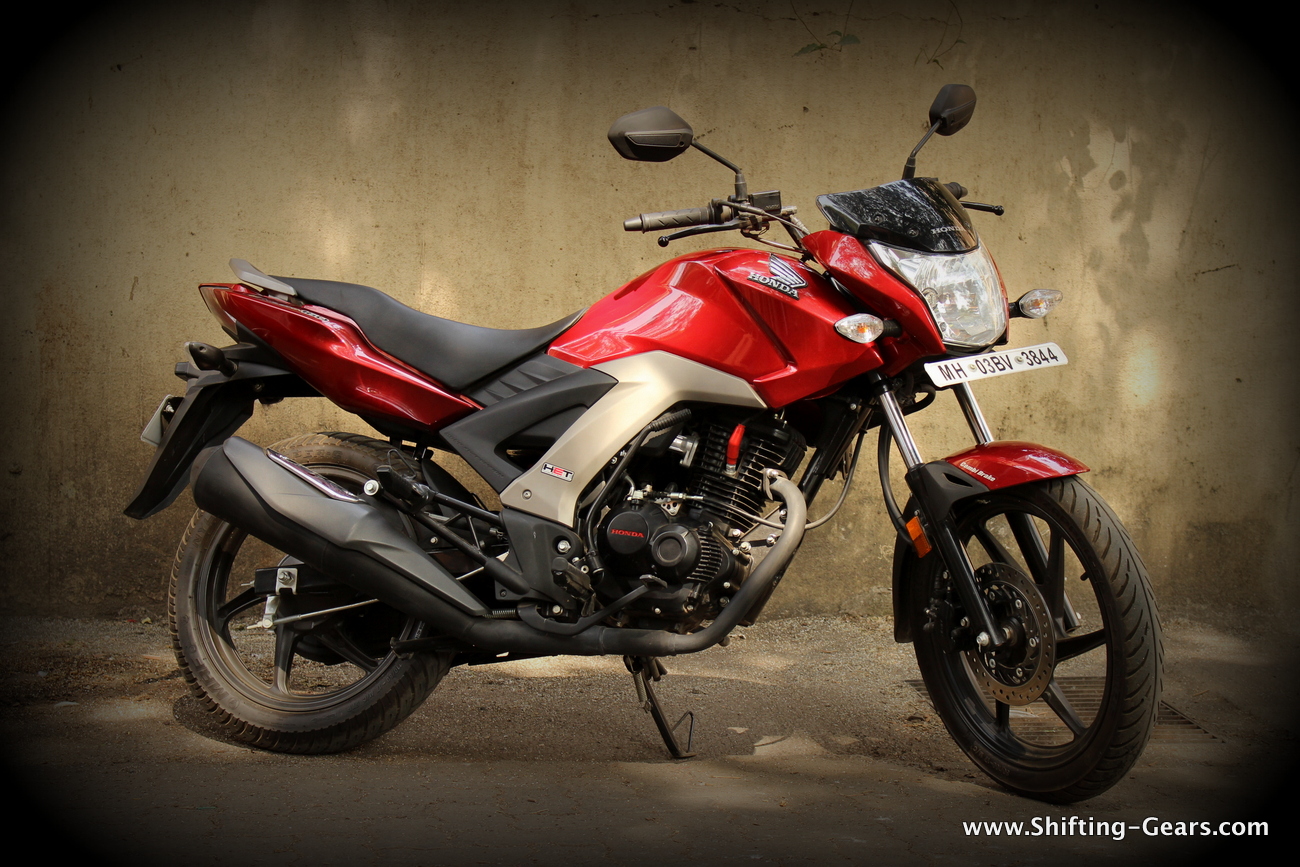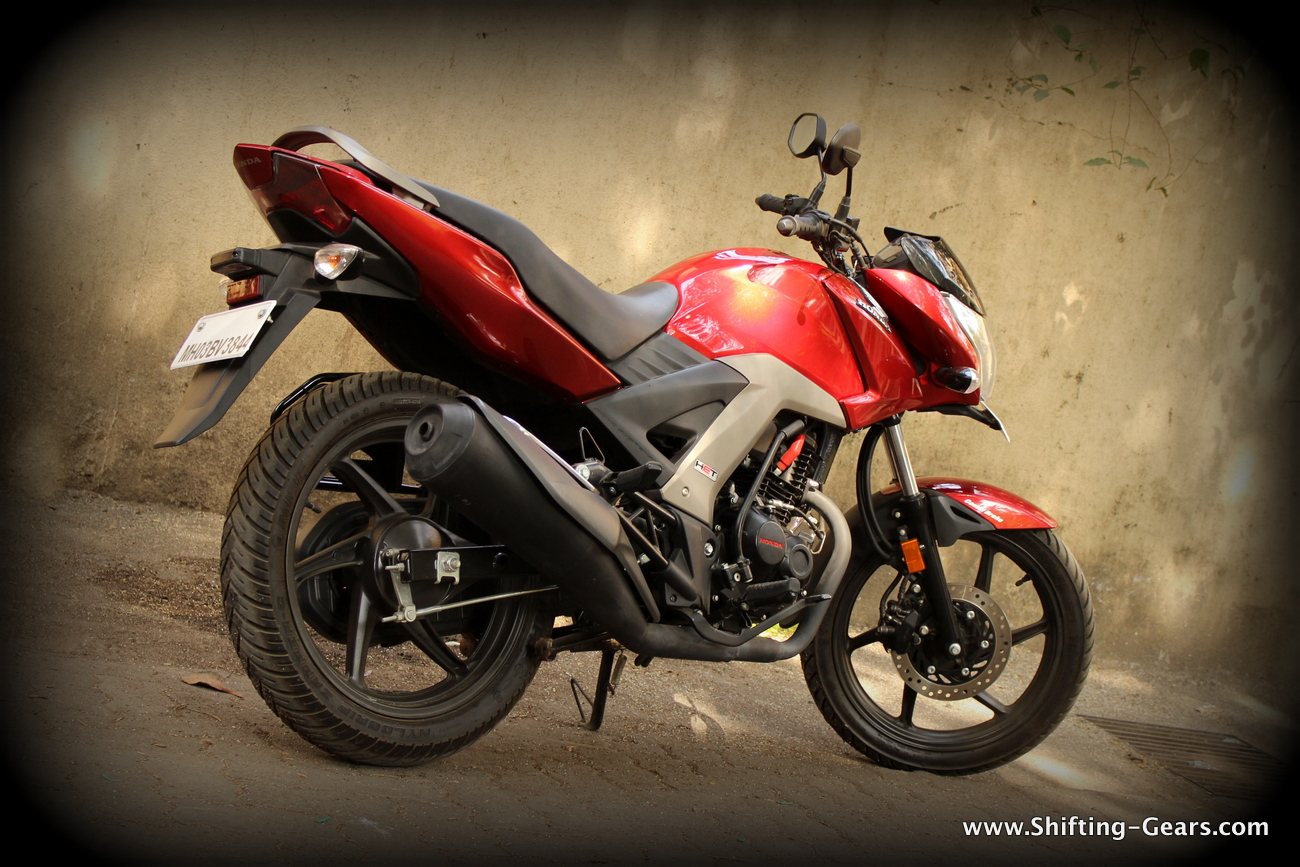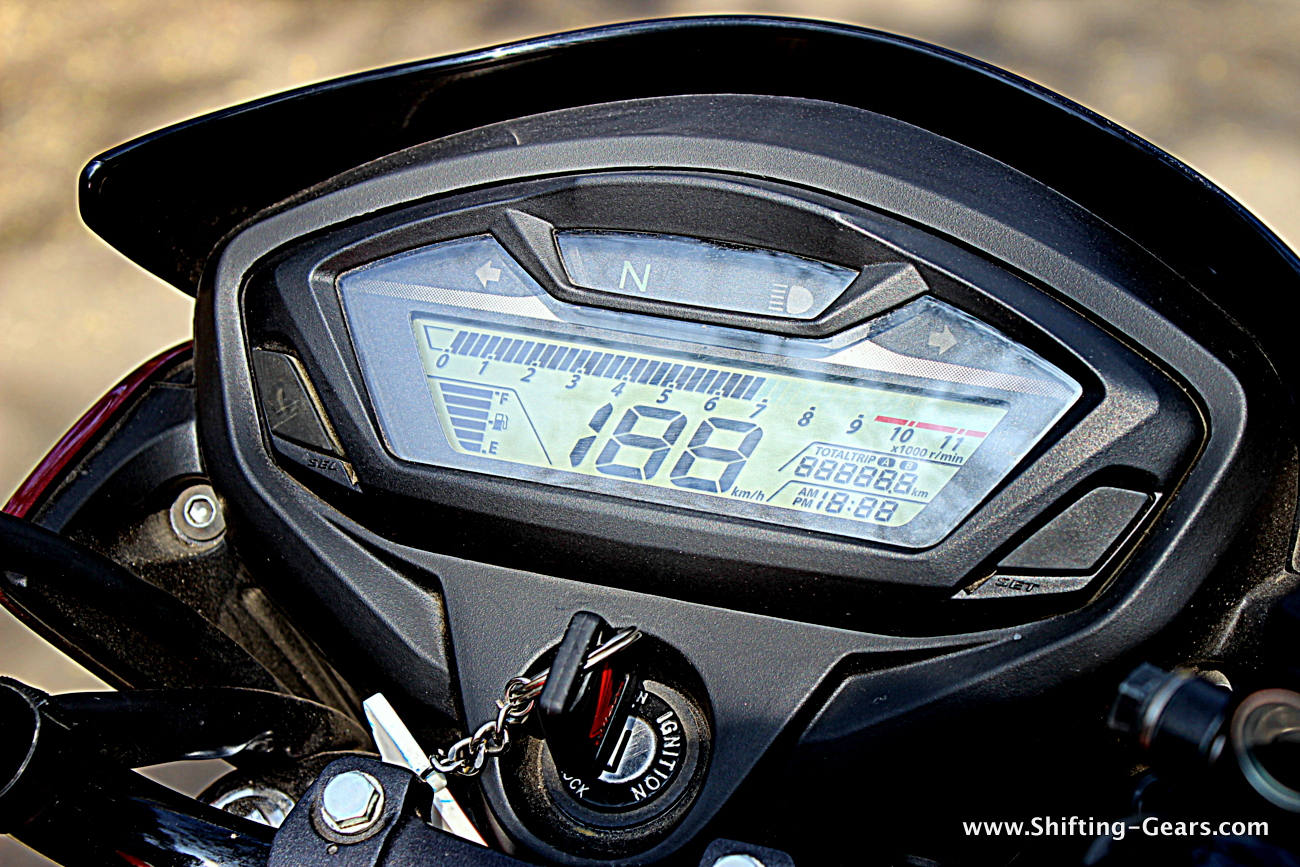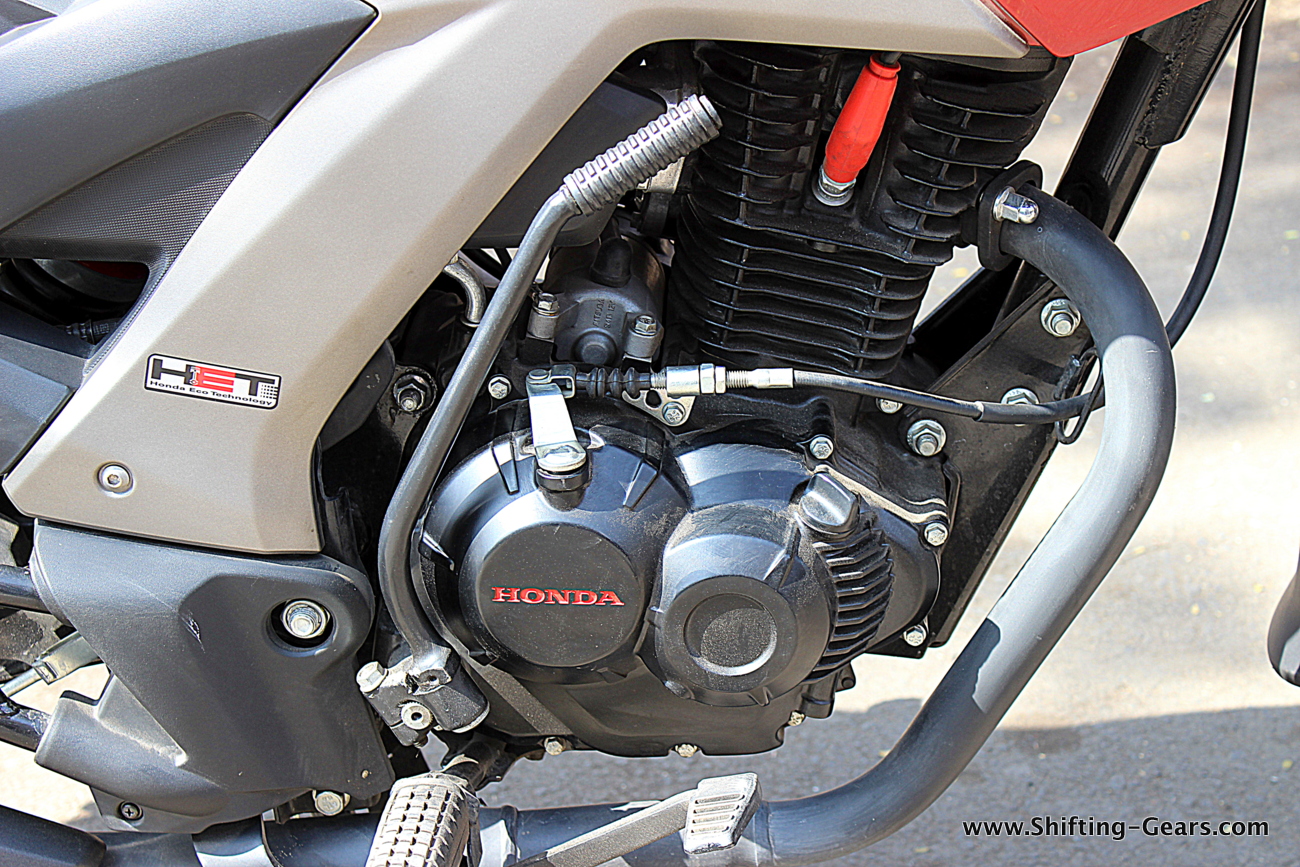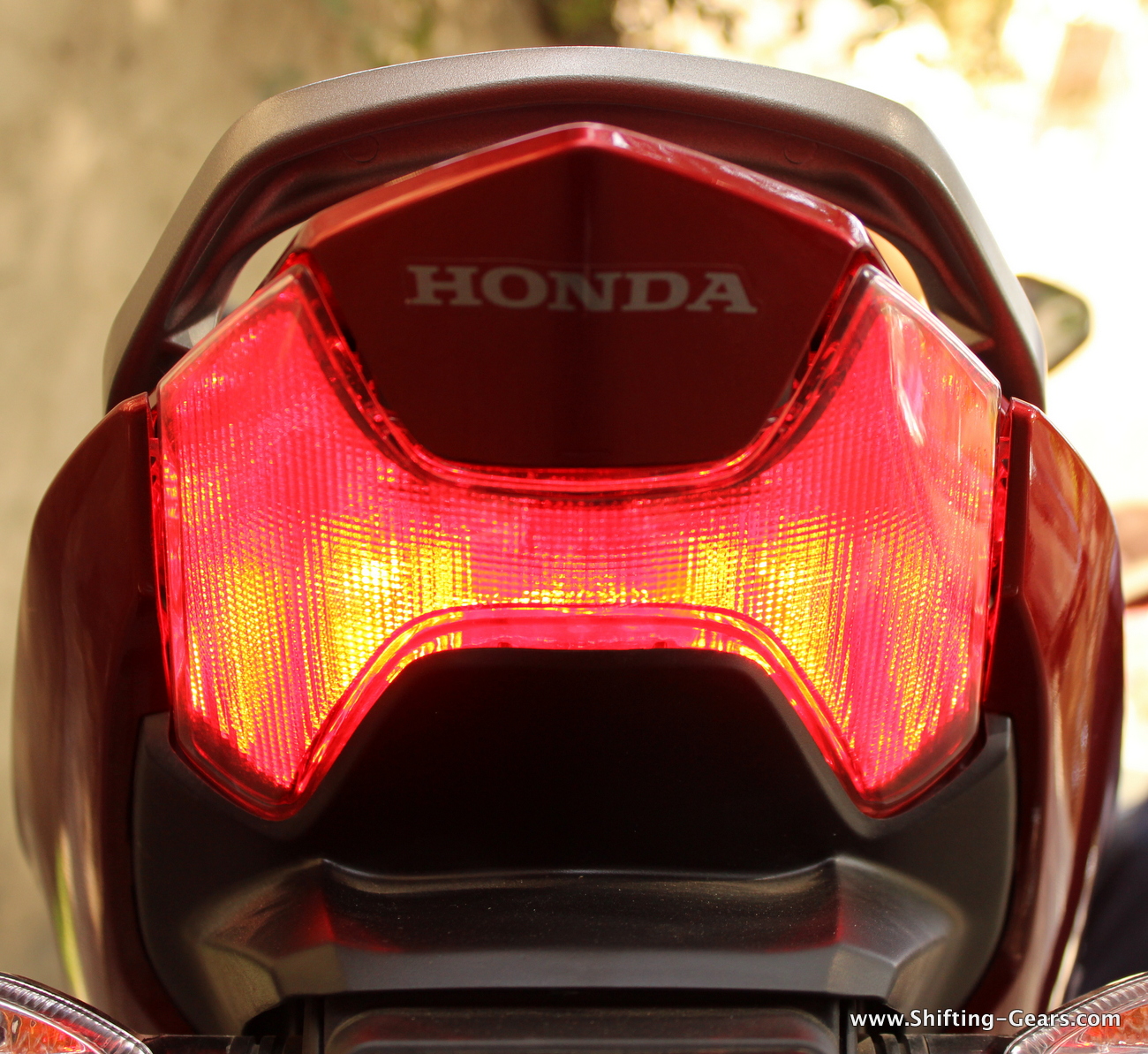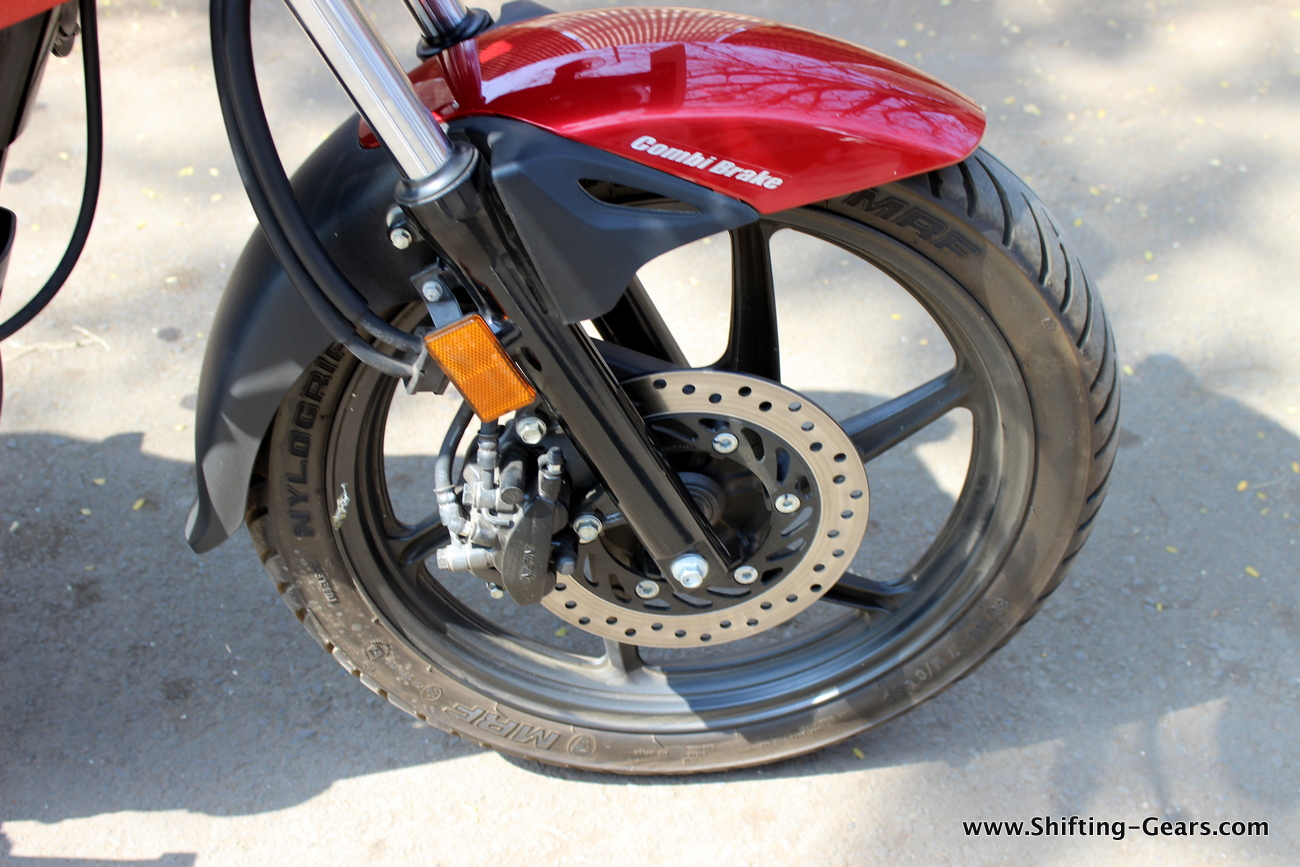Honda Unicorn is a very well known name in the Indian two-wheeler industry. Launched a decade ago in 2005, the Unicorn was a very good product offering for its time. Being one of the first bikes in the segment to come equipped with a monoshock rear suspension, the Unicorn was an instant hit. The super refined engine, the halo of owning the Honda badge, a decent looker; the Unicorn ticked almost all boxes for a potential buyer. But then, it went on to stay on sale in the Indian market for a decade. Too much! No? For a 10 year old product, the Unicorn still manages to sell in decent numbers. Dealers even report waiting periods on the old Unicorn when new products are just gathering dust in the showrooms. But what is so great about the Unicorn in today’s date? Honestly, nothing! The competition has moved much ahead of what Honda is imagining and offers more competent products by 2015 standards. Unlike Honda milking the Unicorn as a cash cow for 10 years now.
Well, we have to mention that Honda did try their luck with other motorcycle models in the 150cc class. The CB Dazzler & CB Trigger were the best examples of lackluster products just trying to cash in on the Honda badge, but the customer gave both the products a cold shoulder. Why? Well, the Dazzler & Trigger looked much better than the old Unicorn, but then, offered almost similar riding dynamics. The Unicorn had been a tried and tested product with new buyers eventually opting for the older product and Honda had to pull the plug off the new models. Honda then realised that rather than launching another bike with a new brand name, it was a safe bet to bring back the Unicorn nomenclature. The new Unicorn, or the CB Unicorn 160 as the company likes to call it is a decade apart from the first generation Unicorn. Surprisingly, when we spoke to a dealership, he mentioned that there were only 150 bookings for the new model while the old Unicorn had a waiting period. So what does Honda have to offer this time? Is it any good? Or is Honda simply playing it safe by calling it a ‘Unicorn’? We took the bike for a spin to find out…
Styling:
First things first, the new CB Unicorn 160 costs Rs. 80,000 (on-road Delhi) for the standard model. On the other hand, the latest segment benchmark, the Suzuki Gixxer costs Rs. 83,500 (on-road Delhi). Although this makes the Unicorn a cheaper buy, the bike is by no means even close to what Suzuki has to offer. When we say that the competition has zoomed ahead of Honda, we mean it. The CB Unicorn 160 cannot hold a candle in front of the Suzuki Gixxer or the Yamaha FZ Version 2.0. If we have to be realistic, the nearest competitor to the Unicorn 160 would be the likes of Hero Xtreme, Bajaj Discover 150, etc.
In the styling department, the CB Unicorn 160 is very average to look at. It is not bad, but it has absolutely no flare to attract customers except for the Honda badge on the tank. At the front, the Unicorn gets a conventional clear lens headlamp with a bikini fairing. Honda is clearly not interested in fighting it up in the features department. The motorcycle still does not get pilot / position lamps and uses a conventionally placed parking bulb within the headlamp enclosure. Why Honda? Don’t you benchmark products with competition? Above the headlamp, you have a small gloss black wind deflector with a Honda sticker on it. The bikini fairing on either side of the headlamp is body coloured and the turn indicators protrude from here. The telescopic front fork is painted in black and holds the body coloured front mud guard, half of which is black plastic. The combi-brake equipped model has a ‘combi brake’ decal on the front mud guard. Old school 6-spoke black alloy wheels are identical to the decade old Unicorn and house the 240mm front disc brake. For lateral visibility at night, Honda provides an amber reflector on the front suspension fork.
Coming to the side profile, things are the same – boring. There is nothing exciting in the styling department at all. Honda has made use of the body colour, silver & black in the right quantity to break the monotony. The fuel tank made out of metal is mildly sculpted to accommodate your knees while playing around corners. The bike gets a old-school fuel filler cap which comes out completely when you twist the key. Tank gets sharp shrouds on either side where the Honda badge in chrome is slapped. These tank shrouds aren’t too big and do not flow all the way down near the engine compartment. Below the tank you get a silver & black plastic side panel which covers up the frame neatly. A small ‘HET’ (Honda Eco Technology) badge is slapped here. Engine is painted in black and the casing has Honda etched in red paint. Long & contoured seat is a single piece and will offer decent room for the slim as well as heavy riders.
At the back, the new Unicorn gets a ‘H’ shaped tail lamp which is unique amongst other Honda products. You get a silver grab rail above the tail lamp which comes in handy for the pillion rider. The rear body panel are one piece bolted from the side panel all the way up to the tail lamp. The ‘CB Unicorn 160’ badge is slapped over here. Honda makes use of a conventional long exhaust pipe, in all-black. It gets a small chrome heat shield to prevent the matte black end can from scratching. Rear mud guard is a full size unit and covers up majority of the rear tyre. Clear lens turn indicators are mounted over here. On the LHS, the saree guard unit is probably the only place where designers spent most time. It looks very classy with a plastic piece covering up the open areas nicely not to allow anything to get stuck in the wheels. Chain also gets a full cover, top & bottom. Rear wheels do not get a disc brake, even as an option. The bike gets a 130mm drum brake with CBS (combi brake) as an option.
The CB Unicorn 160 rides on 80/100/R17 front tyre & 110/80/R17 rear tyre.
Instrumentation & ergonomics:
The new Honda CB Unicorn 160 gets an all-digital instrument cluster, different from the Trigger. The cluster displays the RPM in horizontal bars on top and the speed at the centre, below. Other information displayed includes digital fuel gauge, time, odometer & two trip meters. A couple of tell tale lights are placed above the digital display. When switched off, you can still see the redline markings from 9,700 RPM to 11,300 RPM. Keyhole is conventionally placed under the instrument cluster. And yes, no engine kill-switch being offered till date. The choke switch is oddly placed over the engine casing, on the LHS.
Honda is also known for offering poor quality switchgear, and the story continues with the CB Unicorn 160. Quality of plastic used for the switchgear is very poor. Also, the layout is of bikes from the 90s and not at all in sync with the bikes of today’s generation. On the right, you only have the self-start switch while all other controls are placed on the LHS switch. The sliding headlamp on / off switch, press button for high beam are very distasteful for this segment. Conventional handlebar is painted in black and the rear view mirrors offer decent viewing range, although your elbows do eat up some space here.
Riding position of the CB Unicorn 160 is commuter centric. Although the bike slots in the premium performance category based on the price, the seating position is a segment below, almost at par with the Discover 150 & the likes. The rider sits upright with the footpegs placed forward. While this will suit the commuting purpose, it simply won’t be liked much by the youth. If me must say, this is a very ‘Uncle’ seating position. Although focused on the commuter side, the seat isn’t very soft. It can tire you after sometime. On the flipside, it is long and very accommodating. Those on the heavier side will also find enough room while riding along with a pillion. For the pillion, there is ample seat room and the grab rail behind is easily accessible. Height of the motorcycle will suit riders of all height. Even for the pillion, hopping on & off is an easy task. Although the tank has been sculpted to accommodate your knees, the seat is raised towards the front not allowing you to make full use of the available knee room.
Overall, the CB Unicorn is a mixed bag. It gets a bigger engine to boast better performance, but wants to deliver only commuter friendly riding dynamics.
Engine, performance & handling:
Powering the CB Unicorn 160 is an all-new single cylinder motor. The engine is now bigger in capacity and boasts 162.71cc compared to the previous 149cc. The new 160cc motor now develops 14.5 BHP of power @ 8,000 RPM & 14.61 Nm of torque @ 6,000 RPM. Engine is matched to a 5-speed gearbox and Honda claims a top speed of 106 kmph for the new Unicorn. There are multiple other changes to the new engine including new sleeve design, new bearings, etc. To keep vibrations under control, Honda has also added a counter balancer on the new Unicorn.
Fire up the motorcycle and this is where the CB Unicorn 160 shines. The engine is very smooth and refined. At idle, it is difficult to tell if the engine is running. The electric starter isn’t too loud either and the bike remains calm at idle RPM. The exhaust note on idle is also very, very muted. This is what the old Unicorn owners will connect with while riding this new model.
Slot it in first, wring the throttle and the Unicorn moves ahead with no drama. A noteworthy mention, the clutch of the new Unicorn is super light. One will actually need to get used to this light clutch when new to the bike. This will surely ease up city commuting. Even with two up, the bike moves ahead with very little throttle input. The increase in torque is surely helping the motorcycle in its city rideability. Gearing however is on the taller side. In first gear, if you revv hard, the bike will zoom well ahead of the 45 kmph mark, almost near to 50 kmph. Second gear is good for 80+ kmph which is not very commuter-like if you ask us. The bike has decent mid-range punch and overtaking within the city is an easy task. The gearing is tall, but still, one can ride in top gear at as low as 40 kmph without any engine knocking. City rideability of the new Unicorn is really good.
Move to the highway and the taller gear ratios initially let you have decent amount of fun. However, the 4th & 5th gears are very short and the bike struggles at speeds over 100 kmph. The Unicorn 160 is no mile muncher and sedate riding style is what it suits best for. Power delivery is very linear. The bike lacks top end punch, but clearly, it isn’t built for that purpose. On the highways, it is best to ride the Unicorn at about 70 – 80 kmph when the engine is at almost 5,000 – 6,000 RPM. Engine remains smooth at such cruising speeds.
Honda claims a fuel efficiency figure of 62 kmpl for the CB Unicorn 160.
NVH levels are very well maintained. The handlebar remains smooth at all times. Although there are some vibes felt on the footpegs while working your way up with the throttle wide open, we would let this pass. The exhaust note remains very composed while riding under 5,000 RPM and gets a bit throaty as soon as you cross the 6,000 – 7,000 RPM mark. Honda offers an old-school toe & heel gear shifter with the Unicorn 160 which the uncles would like, but younger boys won’t. Gearbox is smooth and it did not false shift even once. Finding neutral is also fairly easy.
Dynamically, the Unicorn is again very average. It suits city commuting the most and not meant for being thrown around in the twisties. Suspension setup is soft and soaks up bad roads well. Broken roads are tackled well. But on very bad roads, the bike will result in slightly unwanted vertical movement transmitting jerks to the rider & pillion. Handlebar position is perfect and it is easy to direct the bike out of city traffic. The bike remains stable on city & highway speeds but is a bit nervous during corners, thanks to the soft suspension. Also, the riding position is a giveaway that one must not expect too much fun during corners. The bike rides on MRF Zappers which offer decent grip by segment standards. Tyres have been kept on the narrower side to optimize fuel efficiency. Braking performance is more than adequate and thanks to the CBS (combi brakes), the bike stops in a straight line without drama. A rear disc brake would have rounded off the Unicorn 160 well.
If you’re in the market to spend around Rs. 80,000 on a motorcycle, would we recommend the CB Unicorn 160? Well it depends. If you want to have fun, the answer is NO. The Unicorn is a rather boring, commuter centric motorcycle and has no edge over competition. It simply carries forward the no nonsense characteristics and conservative styling to appeal to those looking at function over form. But if you want a punchy & reliable commuter and you care less about riding posture and what the competition offers, sure, the CB Unicorn 160 will pass the test of time. The older CB Trigger gets more equipment in the form of a rear disc brake, but the new Unicorn 160 gets more juice from the engine. Will the new CB Unicorn 160 shine in the sales department? Or will it die a slow death like the CB Dazzler & CB Trigger, only time will tell. Meanwhile, we are sure that if Honda continues with the old Unicorn, that will still be a hot favourite amongst commuters.
Click here to check out the Honda CB Unicorn 160 photo gallery.

